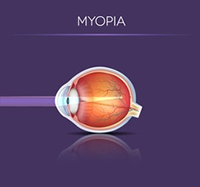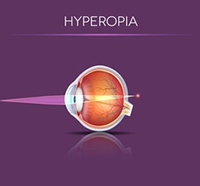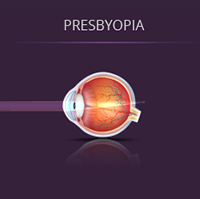LASIK Expectations
REALISTIC EXPECTATIONS
WHY ARE THEY CENTRAL TO YOUR SATISFACTION?
UNDERSTAND THE DIFFERENCE
Become thoroughly knowledgeable about the LASIK procedure – its benefits, risks and probable outcomes – prior to undergoing LASIK surgery. Fully inform yourself and feel comfortable that you are making an educated decision based upon facts. Please keep in mind:
CONSIDER INDIVIDUAL SITUATIONS
According to refractive error:- Myopia and myopic astigmatism
- High Myopia
- Hyperopia and hyperopic astigmatism
- Presbyopia
ASK MORE QUESTIONS ABOUT LASIK
TRUE OR FALSE:
Everyone who has LASIK will never again wear glasses. Fact: Dr. Seibel aims for results of 20/20 or better for your LASIK procedure, so that you can perform most daily activities without your glasses. However, there is a possibility that after LASIK surgery, depending on your age and the condition of your eyes before surgery, you may need to wear reading glasses or corrective lenses for at least some activities.TRUE OR FALSE:
Everyone who has LASIK will achieve 20/20. Fact: 98% of LASIK patients could see 20/20 or better after CustomVue LASIK in the FDA validation study for this exciting technology. Dr. Seibel was one of only 13 eye surgeons nationally to have been chosen to participate in this important study. Those with moderate to high myopia (greater than 7 diopters) have a lesser chance of achieving that result. As LASIK techniques and technology improve, the results continue to improve.TRUE OR FALSE:
If I do achieve 20/20 after LASIK, I will have perfect vision. Fact: While visual acuity (20/20, 20/40, etc.) is a useful clinical test of vision, it is not the only measure of vision. For example, eye charts do not assess sensitivity to different shades of gray, how your vision is affected at night or in dim light, or how effectively your eyes change and maintain focus. “20/20” does not mean “perfect” vision. The main focus should not be on achieving this number, but rather on reducing your dependence on glasses or contacts.TRUE OR FALSE:
If I don’t achieve 20/20 vision, I will not be satisfied with my LASIK results. Fact: Achieving 20/20 is not the ultimate measurement for LASIK satisfaction. Several studies have compared the final visual acuity (such as 20/20) with patient satisfaction (whether they were happy). They found:- 80-95% achieving 20/40 or better
- 90-97% were highly satisfied and would definitely have LASIK surgery again
INDIVIDUAL CONSIDERATIONS ACCORDING TO REFRACTION:
- Myopia and myopic astigmatism
- High Myopia
- Hyperopia and hyperopic astigmatism
- Presbyopia
MYOPIA (NEARSIGHTEDNESS) & MYOPIC ASTIGMATISM
According to recent figures provided by ASCRS, which considered 1,736 eyes with myopia and myopic astigmatism (up to -14 diopter of myopic error and 6 diopter of astigmatism), approximately 87% of the eyes that had LASIK achieved 20/40 or better one month post-operatively.
By six months, 93% of eyes achieved 20/40 or better. In most regions, this is qualifies you to drive without having to wear contacts or glasses.

HIGH MYOPIA (VERY NEARSIGHTED)
Several United States and international studies demonstrate that LASIK for higher degrees of myopia can be effective if patients whose eyes are characterized by higher degrees of myopia have a different set of expectations regarding possible outcomes. The incidence of regression with the highly myopic patients after LASIK is slightly higher. The aim then is for 20/40, rather than 20/20, to make allowance for this, with the goal of the surgery being within one diopter of emmetropia when vision stabilizes. Additionally, studies have noted a slightly higher risk of complications in highly myopic patients.HYPEROPIA (FARSIGHTED) & HYPEROPIC ASTIGMATISM
Eyes that are characterized by hyperopia carry a different set of expectations regarding outcomes than myopes.
Typically, the visual recovery of hyperopic patients is not as quick as that experienced by myopic patients. Consequently, Dr. Seibel may discuss a surgical plan that calls for operating on the one eye then wait a few days to several weeks before operating on the second eye.
Overall, studies have shown that the six month post-operative results are similar to those achieved for myopia. However, there may be a slightly higher incidence of regression associated with the procedure.

PRESBYOPIA
If you are over 40 years old and are corrected for excellent distance vision, you might have to give up some of your close vision.
This happens because presbyopia, the natural hardening of the lens, affects people as they enter their forties. Presbyopia is caused by the changes within the eye’s crystalline lens as one ages, and affects everyone. These changes prevent the lens from changing focus from the distance to up close. Eventually everyone, if they live long enough, will need to wear reading glasses. LASIK does not prevent the onset of this condition, nor does it treat it. Monovision is a possibility that has met with substantial success in allowing patients some independence from separate distance and reading glasses, and something you may discuss with Dr. Seibel.
